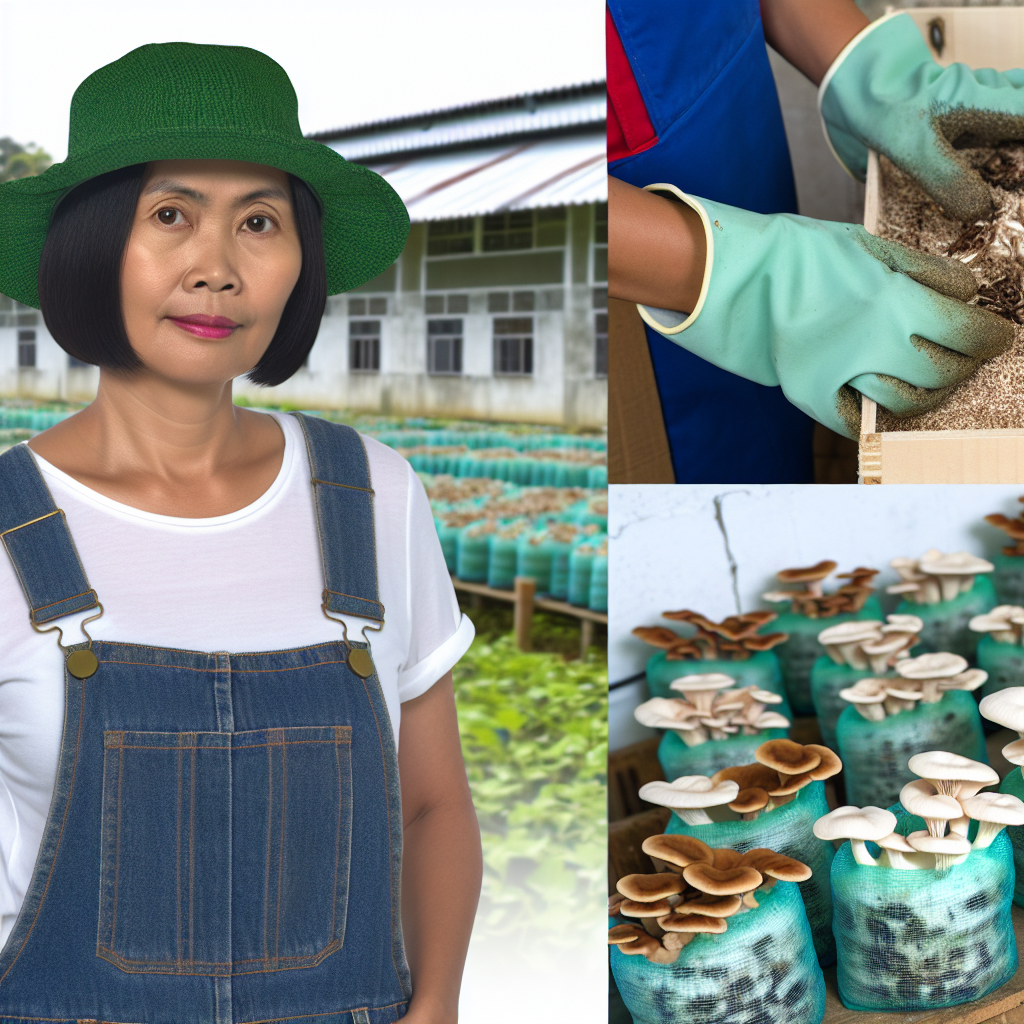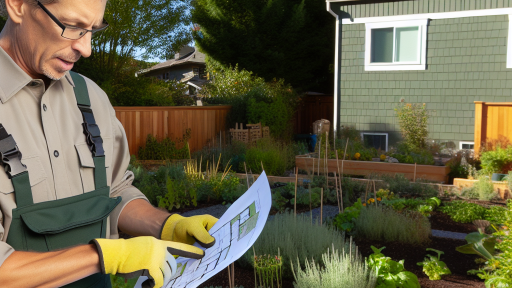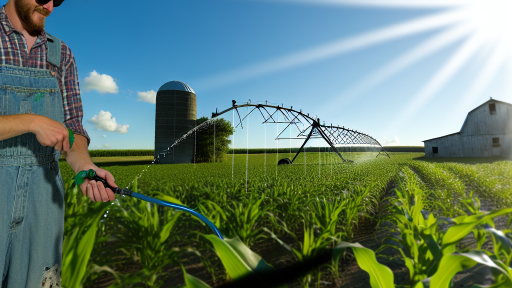Introduction to Sustainable Mushroom Farming
Sustainable mushroom farming emphasizes eco-friendly practices.
It balances agricultural productivity with environmental health.
Farmers use organic techniques to cultivate mushrooms responsibly.
Importance of Sustainability in Agriculture
Sustainability reduces negative impacts on the environment.
It supports the preservation of natural resources.
Additionally, sustainable practices enhance food security.
Benefits of Organic Mushroom Cultivation
Organic mushroom farming relies on natural processes.
This method encourages soil health and biodiversity.
Consequently, it reduces dependency on synthetic chemicals.
Reduction of Chemical Usage
Organic techniques minimize harmful pesticide usage.
This approach protects beneficial insects and organisms.
As a result, farms become more resilient and productive.
Improved Soil Quality
Healthy soil is fundamental to successful mushroom farming.
Organic methods enhance soil structure and fertility.
Moreover, it promotes beneficial microbial activity.
Transform Your Agribusiness
Unlock your farm's potential with expert advice tailored to your needs. Get actionable steps that drive real results.
Get StartedKey Techniques for Sustainable Mushroom Growth
Various organic techniques can support sustainable mushroom farming.
Each method contributes to a more balanced ecosystem.
Composting
Composting improves soil health and provides nutrients.
Farmers often use agricultural waste for composting.
This process recycles organic materials effectively.
Crop Rotation
Crop rotation prevents soil depletion and reduces disease.
This technique promotes soil biodiversity and health.
Consequently, it improves overall farm productivity.
Natural Pest Management
Farmers can utilize natural predators to control pests.
Integrating companion planting can further deter harmful insects.
Such methods enhance ecological balance on the farm.
Community and Economy
Sustainable mushroom farming benefits local communities.
It creates job opportunities and supports local economies.
Furthermore, consumers increasingly demand organic products.
Supporting Local Markets
Farmers can sell directly to consumers through farmers’ markets.
Local sales reduce transportation emissions and costs.
Additionally, they build relationships within the community.
Education and Awareness
Education on sustainable practices is essential for success.
Workshops and training can empower farmers.
Moreover, spreading awareness enriches community knowledge.
Understanding Organic Farming Principles
Fundamental Concepts
Organic farming emphasizes the use of natural processes.
It promotes biodiversity and soil health.
This method avoids synthetic fertilizers and pesticides.
Additionally, organic methods rely on crop rotation and composting.
Showcase Your Farming Business
Publish your professional farming services profile on our blog for a one-time fee of $200 and reach a dedicated audience of farmers and agribusiness owners.
Publish Your ProfileThese practices enhance soil fertility and structure.
Benefits of Organic Farming
Organic farming reduces environmental pollution.
It improves water quality by minimizing chemical runoff.
Furthermore, this approach fosters healthier ecosystems.
Organic produce often contains fewer harmful residues.
Consumers increasingly seek the nutritional benefits of organic products.
Principles of Sustainability
Sustainability is at the heart of organic farming.
Farmers must balance ecological health with economic viability.
This balance encourages long-term agricultural productivity.
Additionally, it supports the local economy.
Investing in organic practices leads to reduced reliance on non-renewable resources.
Regulations and Certification
Organic farmers must adhere to specific regulations.
Certification ensures products meet organic standards.
These standards can vary by country or region.
Certification often includes assessments of farming practices.
Farmers must maintain detailed records of their methods.
Community Involvement
Organic farming promotes community engagement.
Local farmers’ markets connect consumers directly with producers.
These markets foster relationships and trust within communities.
Education about sustainable practices is vital for growth.
Collaboration among farmers enhances shared knowledge and resources.
Choosing the Right Mushroom Species for Organic Cultivation
Assessing Local Conditions
Begin by examining your local climate and soil conditions.
This assessment influences which mushroom species thrive in your area.
Consider humidity, temperature, and sunlight as critical factors.
For instance, Shiitake mushrooms prefer a humid environment.
On the other hand, Oyster mushrooms can adapt to varying climates.
Identifying Popular Mushroom Species
Familiarize yourself with the most suitable species for organic farming.
Common choices include Agaricus bisporus and Pleurotus ostreatus.
These mushrooms are known for their adaptability and market demand.
Furthermore, investigate other species like Lion’s Mane and Maitake.
Understanding Growth Requirements
Each mushroom species has unique growth requirements.
For example, some prefer woody substrates, while others thrive in straw.
Research each species to understand their nutritional needs.
In addition, consider the pH levels of the growing medium.
Optimal pH levels can significantly impact growth rates.
Evaluating Your Experience Level
Assess your own experience with mushroom cultivation.
If you’re a beginner, start with easier species like White Button mushrooms.
As you gain confidence, explore more challenging varieties.
Continuing education is essential for successful cultivation.
Attend workshops or consult experienced growers for advice.
Showcase Your Farming Business
Publish your professional farming services profile on our blog for a one-time fee of $200 and reach a dedicated audience of farmers and agribusiness owners.
Publish Your ProfileConsidering Market Demand
Finally, research the market demand for different mushroom species.
Identify what local consumers prefer and might be interested in buying.
Popular species often include Shiitake and Portobello due to their versatility.
Align your cultivation choices with market trends for better profitability.
Gain More Insights: Getting Started with Hydroponic Farming
Organic Substrates: Sourcing and Preparation Techniques
Understanding Organic Substrates
Organic substrates provide the base for mushroom cultivation.
They offer nutrients essential for mycelium growth.
Common substrates include straw, sawdust, and coffee grounds.
Each substrate type possesses unique characteristics.
Sourcing Organic Materials
Sourcing is critical for successful mushroom growth.
You can collect waste materials from local farms.
Visit mills to obtain wood chips or sawdust.
Additionally, connect with coffee shops for spent grounds.
Always prioritize sustainability during sourcing.
Preparation Techniques for Substrates
Proper preparation enhances nutrient availability.
First, clean the substrate to eliminate contaminants.
Next, pasteurization effectively reduces unwanted organisms.
You can pasteurize substrates using hot water or steam.
Afterward, cool the substrate to room temperature.
Inoculation Process
Once prepared, it’s time to inoculate the substrate.
Distribute the mushroom spawn evenly throughout.
Use sterile tools to prevent contamination.
Next, seal the substrate in breathable bags.
This allows mycelium to grow without outside interference.
Monitoring and Maintenance
Ongoing monitoring ensures a healthy growth cycle.
Check moisture levels regularly to keep substrates damp.
Provide proper ventilation to encourage mycelium development.
Adjust temperatures according to mushroom variety needs.
Lastly, observe for signs of contamination early.
Learn More: Choosing the Right Hydroponic Equipment
Natural Pest Management Strategies for Mushroom Farms
Introduction to Organic Pest Management
Organic pest management enhances the sustainability of mushroom farming.
This method avoids synthetic pesticides, protecting the environment.
Farmers adopt techniques that work with nature rather than against it.
In this section, we will discuss effective natural strategies.
Utilizing Beneficial Insects
Beneficial insects play a crucial role in pest control.
They help reduce pest populations organically.
Ladybugs and lacewings are excellent examples of these allies.
Farmers can encourage their presence in mushroom farms.
Planting companion plants attracts beneficial insects.
Companion Planting
Companion planting creates a balanced ecosystem.
Showcase Your Farming Business
Publish your professional farming services profile on our blog for a one-time fee of $200 and reach a dedicated audience of farmers and agribusiness owners.
Publish Your ProfileCertain flowers attract beneficial insects that prey on pests.
For example, marigolds attract ladybugs, which control aphids.
This technique enhances biodiversity and reduces pest issues.
Biological Control Agents
Biological control agents offer an effective pest management solution.
These can include bacteria, fungi, and nematodes.
For instance, Bacillus thuringiensis is a natural bacterium.
It effectively targets specific pests without harming others.
Farmers can apply these agents directly to the growing medium.
Application Techniques
Proper application ensures maximum effectiveness of biological agents.
Farmers should monitor pest populations regularly.
Applying biological controls at the right time yields the best results.
Environmental Monitoring
Monitoring environmental conditions is vital for pest management.
Humidity, temperature, and air circulation impact pest populations.
Mushroom farmers should maintain optimal conditions to deter pests.
For example, reducing humidity levels can lower mold growth.
This approach minimizes pest attraction and fungal diseases.
Regular Farm Assessments
Conducting regular assessments allows for early pest detection.
Farmers can identify potential problems before they escalate.
Creating a checklist for weekly monitoring helps maintain consistency.
Natural Repellents
Utilizing natural repellents is another effective strategy.
These can deter pests without harming beneficial insects.
Garlic and neem oil are popular examples of natural repellents.
Farmers can create sprays using these ingredients for pest control.
Homemade Recipes
Farmers can easily prepare homemade pest repellents.
For a garlic spray, blend garlic cloves with water.
Strain the mixture and dilute it before spraying on mushrooms.
This spray repels various pests while remaining safe for the crop.
Training and Education
Education is key to effective natural pest management.
Farmers should attend workshops and seminars on organic techniques.
Staying informed about the latest trends enhances success rates.
Collaboration with local agricultural extensions can provide valuable resources.
Sharing Knowledge
Farmers can benefit from sharing experiences with peers.
Establishing a network fosters mutual learning and support.
Community gatherings can provide a platform for discussion and innovation.
Delve into the Subject: Creating a Food-Producing Garden Farm

Implementing Crop Rotation and Companionship Principles
Understanding Crop Rotation
Crop rotation involves alternating different types of crops in the same area.
This practice enhances soil health and reduces pest populations.
Each crop contributes unique nutrients to the soil.
Rotating crops prevents the buildup of pathogens and pests.
Furthermore, it increases overall yield and crop diversity.
Showcase Your Farming Business
Publish your professional farming services profile on our blog for a one-time fee of $200 and reach a dedicated audience of farmers and agribusiness owners.
Publish Your ProfileChoosing Companion Plants
Companion planting enhances growth and pest resistance.
Select combinations that benefit each other’s growth.
For example, pairing mushrooms with legumes can boost nitrogen in the soil.
This benefits mushroom growth significantly over time.
Additionally, certain plants deter harmful insects.
Benefits of Crop Rotation and Companionship
Utilizing these techniques boosts the ecosystem’s resilience.
They improve soil structure and fertility while reducing the need for chemicals.
This sustainable approach also reduces water usage.
As a result, it promotes healthier crop production.
Implementation Strategies
Begin by planning your crop layout for the season.
Incorporate a mixture of annual and perennial crops.
Observe which companions thrive together in your specific environment.
Gather data on crop yields and insect occurrences to refine your strategy.
Monitor soil health regularly to adjust practices as needed.
Learn More: Rooftop Gardening Ideas For Urban Spaces
Harvesting and Post-Harvest Handling of Organic Mushrooms
Timing the Harvest
Harvest at the right time for optimal flavor and texture.
Inspect your mushrooms daily as they mature.
Look for a firm cap that has not yet fully opened.
Use a clean and sharp knife for harvesting.
Proper Harvesting Techniques
Harvest mushrooms carefully to avoid damage.
Cut the stem at the base, leaving some of it intact in the substrate.
This method promotes future growth and minimizes waste.
Handle the mushrooms gently to prevent bruising.
Cleaning After Harvest
Clean mushrooms with a soft brush or cloth.
Avoid washing them under water as they absorb moisture.
Remove any debris to maintain quality.
Storage Practices
Store harvested mushrooms in a cool, dry place.
Use paper bags instead of plastic to avoid moisture retention.
Keep them in a refrigerator for maximum freshness.
Transporting Mushrooms
Handle mushrooms with care during transport.
Use breathable containers to reduce moisture accumulation.
This helps maintain their quality and prolongs shelf life.
Marketing Organic Mushrooms
Highlight freshness and sustainability in your marketing.
Educate consumers on the benefits of organic mushrooms.
Utilize social media and local markets for effective outreach.
Marketing Organic Mushrooms: Strategies and Consumer Demand
Understanding Consumer Trends
Consumer interest in organic products continues to rise.
Health consciousness drives demand for organic mushrooms.
Moreover, customers increasingly seek sustainable sourcing.
Marketing teams must tap into these preferences.
Branding and Positioning
Effective branding highlights the unique qualities of organic mushrooms.
Showcase Your Farming Business
Publish your professional farming services profile on our blog for a one-time fee of $200 and reach a dedicated audience of farmers and agribusiness owners.
Publish Your ProfileA compelling story enhances consumer connection to the product.
Positioning as a premium product can attract discerning buyers.
Additionally, endorsements from chefs can boost credibility.
Utilizing Digital Marketing
Digital marketing offers numerous opportunities for promotion.
Social media allows brands to engage directly with consumers.
Online recipes featuring organic mushrooms can inspire purchase.
Email newsletters keep interested customers informed about new products.
Participating in Local Markets
Direct sales at local farmers’ markets build community trust.
Sampling at these venues can increase immediate sales.
In-person interactions foster lasting customer relationships.
Networking with local chefs can lead to collaborations.
Educating Consumers
Education about the health benefits of organic mushrooms is crucial.
Workshops or webinars can inform consumers about cooking techniques.
Offering recipes can enhance customer engagement further.
Informative blog posts can serve as a valuable resource.
Leveraging Sustainability Practices
Highlighting sustainable growing practices attracts eco-conscious consumers.
Transparency in sourcing builds brand loyalty.
Sharing information on waste reduction can enhance marketability.
Emphasizing the carbon footprint reduction can appeal to environmentally minded shoppers.
Additional Resources
Student Organic Farm – Department of Horticulture




